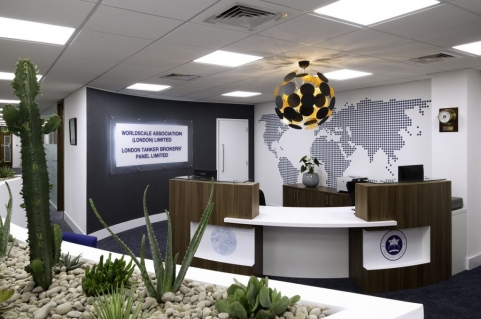As the design of the workplace evolves through various trends, from cellular office environments to open plan spaces and then the rise of agile working spaces, the rising trend of biophilic design has been hard to ignore.
What is Biophilic Design?
Biophilic design is essentially a design framework that intertwines the patterns of nature into the built environment, strengthening the human-nature connection. What makes this work is the effective incorporation of natural elements such as stone, wood, living green walls, water features, and plants into the interior environment.
Apart from the inclusion of natural materials, biophilic design also incorporates the use of natural lighting to help people maintain a natural circadian rhythm, access to fresh air through high quality HVAC systems and an overall design that encourages movement, such as stairs to keep people active and mobile.
Why is Biophilic Design so Effective?
When all the features of biophilic design are combined correctly, what is created is a workplace that optimises employee performance, health and wellbeing, helping organisations reach peak physical and mental performance. Through our innate desire to protect and nurture that which feeds us and sustains us physically and emotionally, we instinctively connect with natural features such as plants, fresh air and water.
Whilst this may seem a financial luxury given the pressures on most organisations, economic reasons are actually one of the key drivers for the growing biophilic trend. As organisations become more aware of the value of investing in employee health, wellbeing and performance, the value of creating a workplace which fosters and improves this is seen as a sound economic policy.
Why is Biophilic Design Relevant?
Biophilic design is changing the way we work and has been a key feature in workspaces from workplace design pioneers such as Google, Amazon, Apple and many others across the world. The focus in creating the best workplaces is also to do with attracting and retaining key talent and these companies realise that by investing in this area, they will be successful in attracting the top workforce and maximising creativity within that workforce.
With the World Health Organisation expecting stress related illness such as mental health disorders and cardiovascular disease to be the two largest contributors to disease by 2020, the onus is on creating spaces where worker wellbeing flourishes. Numerous studies have been shown to demonstrate that by incorporating elements of nature through biophilic design into the workspace, stress levels and ill health absenteeism can be reduced whilst productivity, creativity and wellbeing are improved.
How Do We Implement Biophilic Design in Our Workspace?
The best way to implement biophilic design is at the outset of a project. By involving all the key stakeholders in such a project, including employees, facilities managers, finance teams, office design consultants and biophilic experts like Planteria Group, the whole picture can be realised. Incorporating the spatial and human opportunities that exist enables the organisation to realise a plant display and design that increases performance, wellbeing, creativity and profit.
Planteria Group work closely with Zentura, specialists in office design and fit out, to design biophilia into the perfect space for you creating the ultimate working environment. You can find out more, take a look at their case studies or obtain a free consultancy session here.








